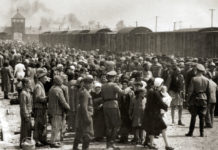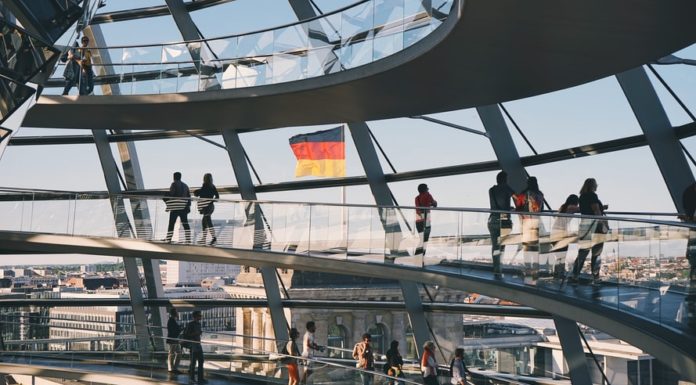
“No one may be prejudiced or favored because of his sex, his parentage, his race, his language, his homeland and origin, his faith, his religious or political opinions.” That is article 3, the third paragraph of the Basic Law of the Federal Republic of Germany that enables peaceful co-existence of all citizens among the sixteen Federal States of Germany. In Alphabetical order, they include the following:
- Baden Wurttemberg
Baden-Württemberg is situated in the southwest of Germany, and it borders both France and Switzerland. Baden-Württemberg is known for its evergreen vegetation that has seen it branded as a natural habitat for native wildlife. Stuttgart is the capital city for Baden-Württemberg.
- Bavaria
Also known as the Free State of Bavaria, Bavaria occupies about 70,550.19 square kilometers of the southeastern landlocked area of Germany. The capital city of Bavaria is Munich, and the whole state is documented to generate a whopping €625 billion in terms of GDP.
Berlin probably doubles up as the central capital city and the busiest state among the 16. Moreover, it is not only large in technological advancements but also in terms of administrative responsibilities and population. Berlin has a rough estimate population of about 3,748,148 inhabitants, as was once reported in 2018.
- Brandenburg
Brandenburg is a sizeable town on the west of Berlin, which combines with the latter to form the Berlin/ Brandenburg Metropolitan Region. Brandenburg occupies about 228.8 square kilometers and is known as the home of the most elaborate archeological museums.
- Bremen
The Free Hanseatic City of Bremen lies in 419.4 square kilometers of German land, which makes it one of the smallest and the least populated Federal states among the 16. Bremen has a population of about 681,032, and the city, Bremen, doubles up as the state’s capital city.
- Hamburg
Hamburg is more of a commercial state and is home to both local and international investors. Hamburg houses the oldest German stock exchange and the world’s oldest merchant bank, Berenberg Bank. The city, Hamburg, doubles up as the capital city.
- Hessen
Hessen is a landlocked state in Germany situated in the central terrain of evergreen vegetation. Hessen is bordered by the states of Lower Saxony to the north, Thuringia to the east, Bavaria to the southeast, and Baden-Württemberg to the south. Wiesbaden is the capital city of Hessen.
- Mecklenburg-Vorpommern
Mecklenburg-Vorpommern ranks 14th in terms of population among all the 16 federal states of Germany. Mecklenburg-Vorpommern is situated in the northern part of Germany and is famous for its sandy beaches. The capital city of Mecklenburg-Vorpommern is Schwerin.
- Niedersachsen
Niedersachsen is the second-largest federal state in Germany. Also known as Lower Saxony, Niedersachsen state lies in an area of about 47, 614 square kilometers with an estimated population of 7.963 million people. Hannover is the capital city of Niedersachsen.
- North Rhine-Westphalia
North Rhine-Westphalia is the state which harbors the famous Rhine river in the western part of Germany. North Rhine-Westphalia is one of the most populous states, with an estimated population of about 17.91 million people. Düsseldorf is the capital city of North Rhine-Westphalia.
- Rheinland-Pfalz
Rhineland-Palatinate is the only federal state that has at least three other countries bordering it in the southwest part of Germany. France, Belgium, and Luxembourg border Rhineland-Palatinate. Rhineland-Palatinate has a population of about 4.074 million people, and its capital city is Mainz.
- Saarland
Saarland was named after the Saar River, and it borders France and Luxembourg in the southwestern part of Germany. Saarland is dominated mainly by a forested area, and it covers about 2570 square kilometers with an estimated population of 990, 509 people. Saarbrücken is the capital city of Saarland.
- Saxony
Saxony is the only state that has the highest number of historic buildings that were rebuilt after World War II. When you walk around, you’ll be astonished by the ancient castles and palaces. Saxony has an estimated population of about 4.081 million people, and its capital city is Dresden.
- Saxony-Anhalt
Saxony-Anhalt houses the home of Martin Luther and the legendary Holy Roman Emperor Otto I was also buried in the same region. Saxony-Anhalt extends to an area of about 20,452 square kilometers, with a population of about 2.277 million people. Magdeburg is the capital city of Saxony-Anhalt.
- Schleswig-Holstein
Schleswig-Holstein is another populous Federal state with an estimated population of about 2.89 million people. Schleswig-Holstein is situated in the most northern part of Germany, and the famous Kiel city is its capital.
- Thuringia
Finally, Thuringia is a German Federal state situated in the east-central part of the country with a large population of about 2.137 million people. Thuringia is known for its vast forest cover and mountain peaks that make a wonderful habitat for wildlife. Erfurt is the capital city for Thuringia.





































